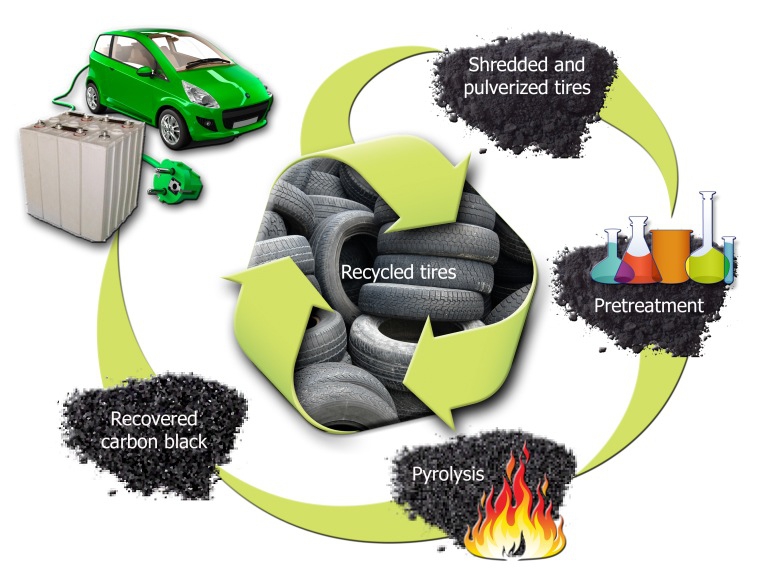
Electrified Transport
Products
Vehicles
Making electric vehicle batteries out of recycled tires
August 28, 2014 | By Anthony Capkun

August 28, 2014 – Recycled tires could see new life in lithium-ion batteries that provide power to plug-in electric vehicles and store energy, say researchers at the U.S. Department of Energy’s Oak Ridge National Laboratory (ORNL).
By modifying the microstructural characteristics of carbon black—a substance recovered from discarded tires—a team led by Parans Paranthaman and Amit Naskar is developing a better anode for lithium-ion batteries. (An anode is a negatively charged electrode used as a host for storing lithium during charging.)
The method has numerous advantages over conventional approaches to making anodes for lithium-ion batteries, say the researchers.
“Using waste tires for products such as energy storage is very attractive, not only from the carbon materials recovery perspective, but also for controlling environmental hazards caused by waste tire stock piles,” Paranthaman said.
The ORNL technique uses a proprietary pre-treatment to recover pyrolytic carbon black material, which is similar to graphite, but man-made. When used in anodes of lithium-ion batteries, researchers say they produced a small, laboratory-scale battery with a reversible capacity that is higher than what is possible with commercial graphite materials.
After 100 cycles, the capacity measures nearly 390 mAh per gram of carbon anode; According to the researchers, this exceeds the best properties of commercial graphite. They attribute this to the microstructure of the tire-derived carbon.
“This kind of performance is highly encouraging, especially in light of the fact that the global battery market for vehicles and military applications is approaching $78 billion and the materials market is expected to hit $11 billion in 2018,” Paranthaman said.
“This technology addresses the need to develop an inexpensive, environmentally benign carbon composite anode material with high-surface area, higher-rate capability and long-term stability,” Naskar said.
Print this page